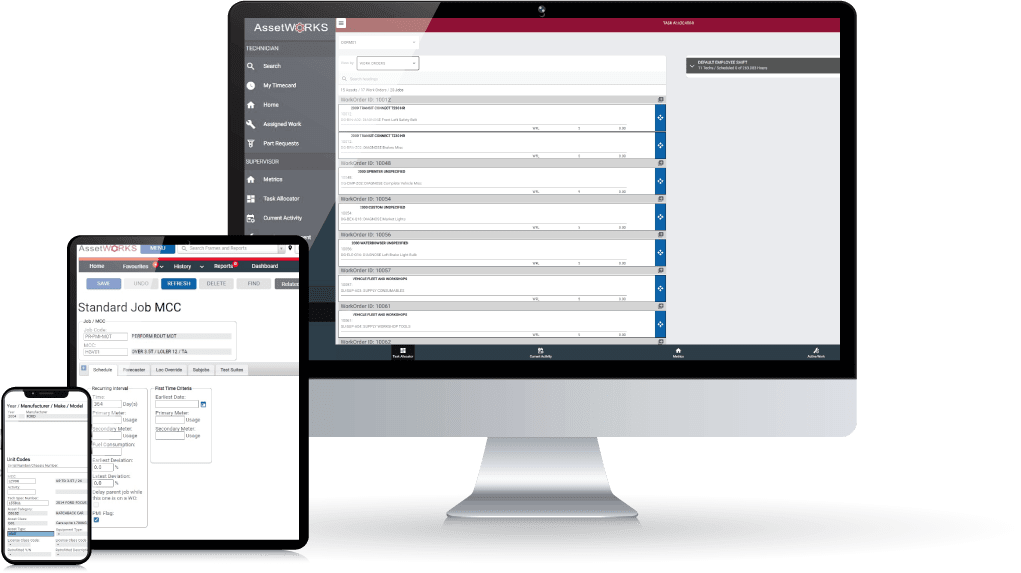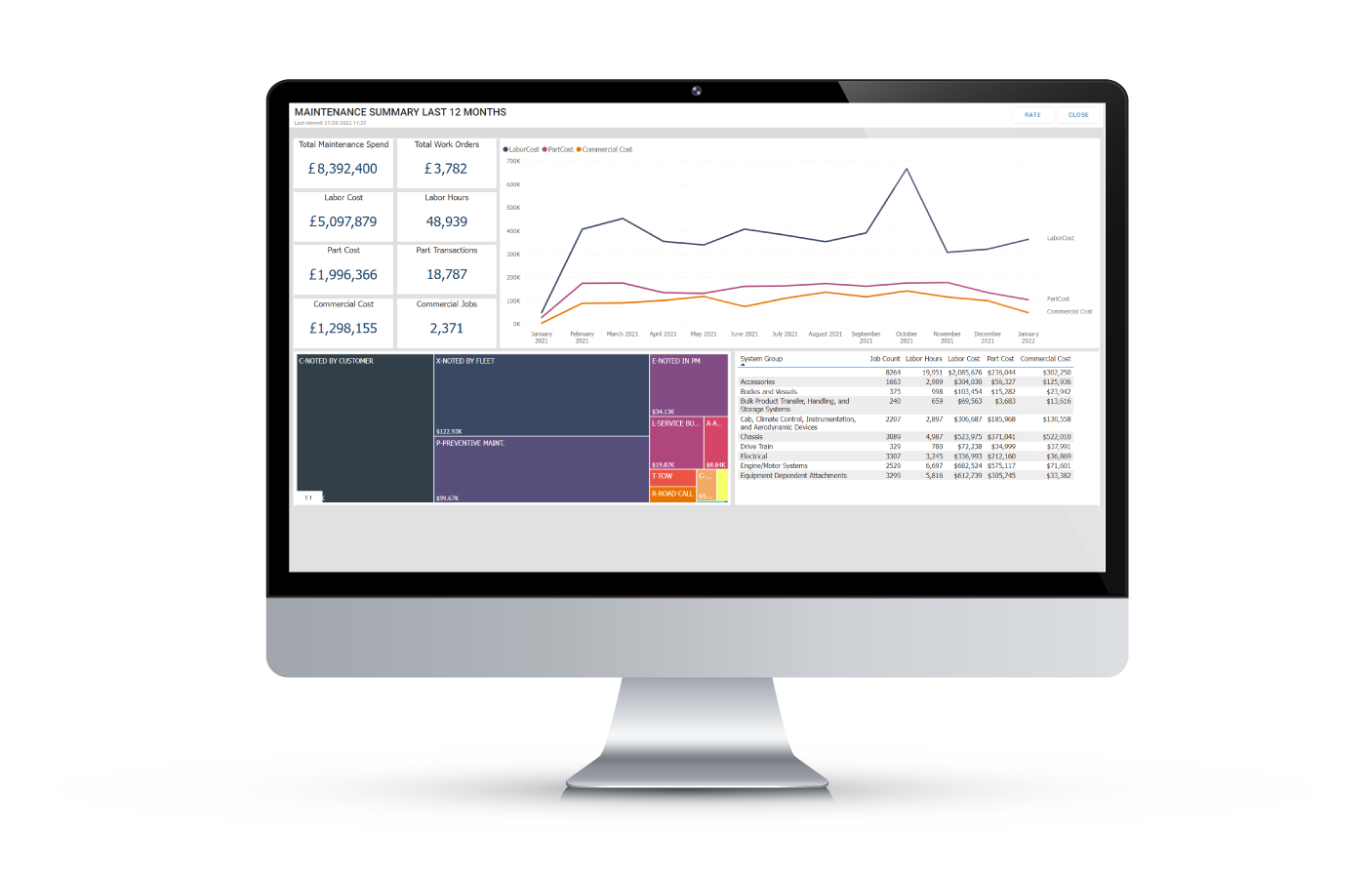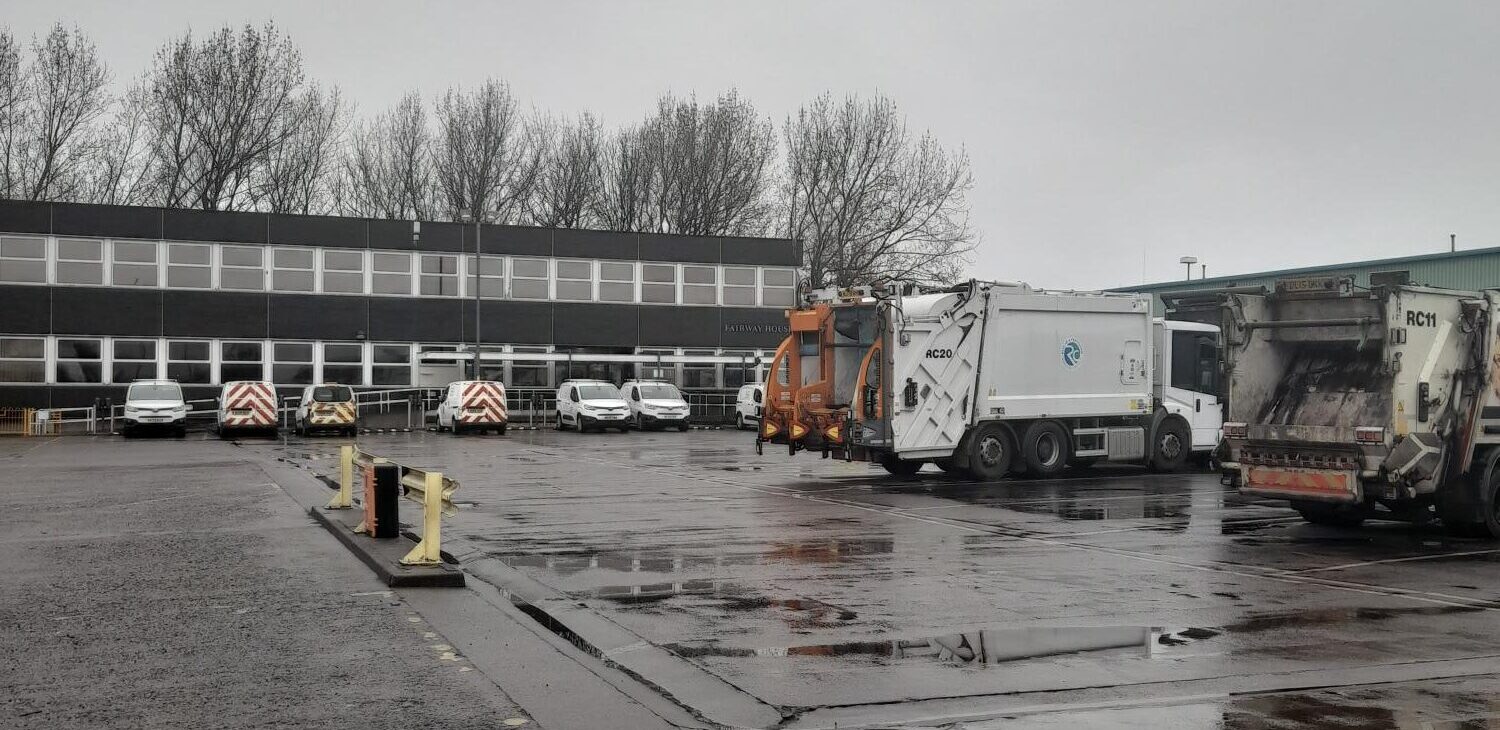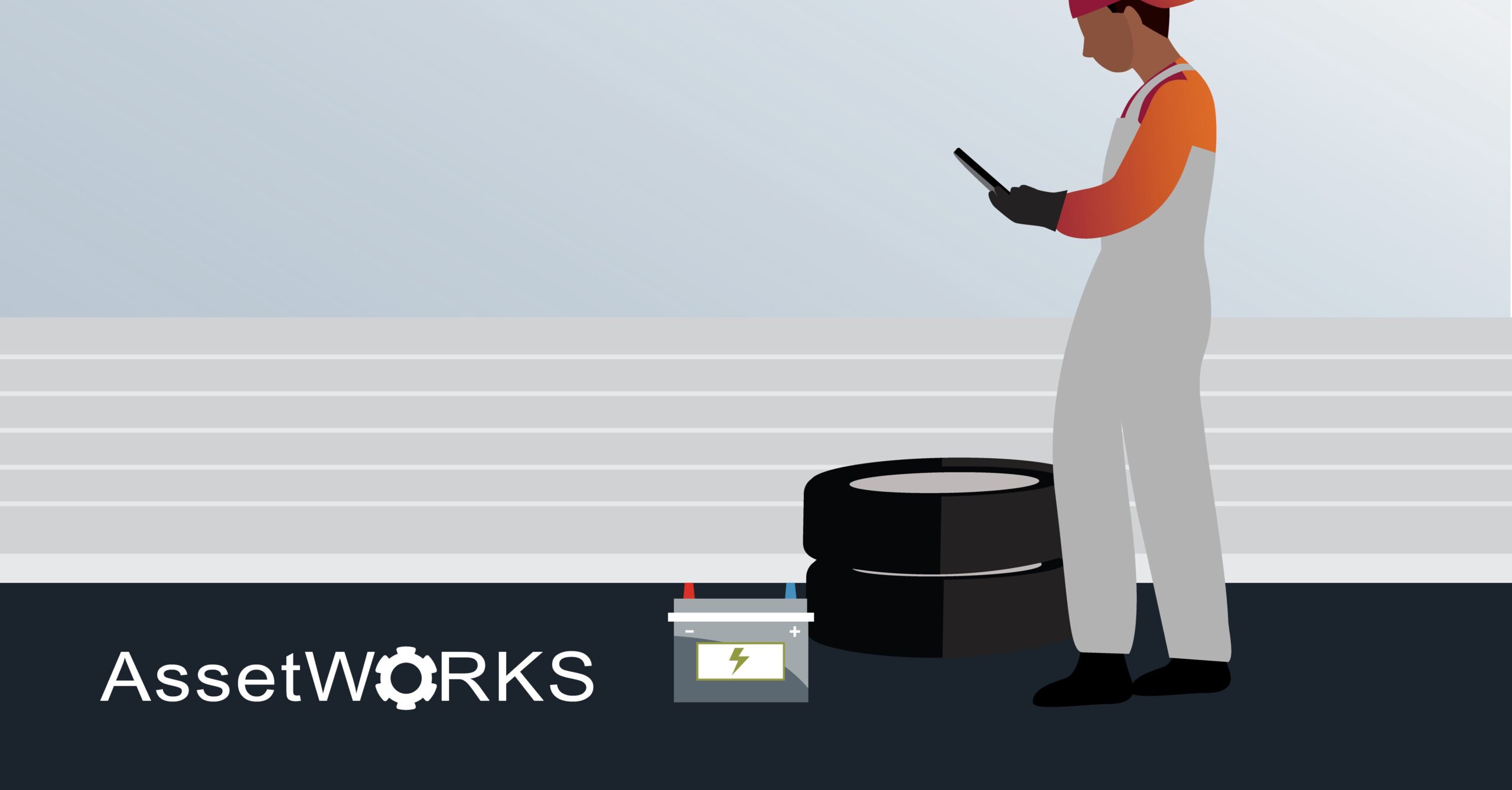The Fleet Management software industry is going through a hugely positive shift and will continue to do so in dramatic fashion as we approach 2030. On one side, the constant political and environmental challenges are forcing fleets to adjust and pivot. On the other, rapidly evolving technology is empowering the fleet managers who embrace it with a staggering amount of data to wield as they see fit.
The focus is clearly on compliance, moving away from combustion engines, carbon awareness, the evolution of autonomous fleet, secure data, driver well-being and when it comes to the life cycle of your vehicles, it’s still all about making every penny count.
Fleet managers are finding it more important than ever to improve efficiency and watch the bottom line whilst managing a plethora of variables from making sure vehicles are road legal, the company is protected at all times, the security of the drivers is constantly monitored through to getting the best price for parts & labour and everything in between.
In this article, we cover what the key elements of fleet management are and give an introduction into what is currently happening to the industry and where we see it going into 2030.
Fleet Management
What is fleet management?
Fleet Management is the organisation and co-ordination of commercial vehicles. From one van, 10 taxis or 1,000 police units, fleet management takes on several forms depending on the size of your business or fleet.
The principles and objectives remaining constant throughout fleet management are keeping costs low, efficiency high and your vehicles moving.
In addition to the vehicles themselves, fleet management is an all-encompassing phrase including the management of driver safety & well-being, the environmental impact of the fleet, adherence to legislation, risk management and fleet sustainability.
Fleet management vs asset management?
All fleet management is asset management, but not all asset management is fleet management.
Assets are essentially ‘things of value’ to a business and can include buildings to plant machinery to equipment tools – almost anything that can be purchased or leased is an asset.
If managed effectively, the business as a whole will be able to develop, operate, maintain, upgrade and dispose of assets efficiently. The more asset-reliant an organisation is, the greater the importance of having a robust and tailored solution in place.
Fleet management is a subset of asset management and depending on the structure of the organisation, may have a considerably higher overall cost. A dedicated role is usually assigned to ensure vehicles are managed effectively and the costs of keeping the fleet on the road are minimised.
What is a fleet managers role?
Fleet Managers have the unenviable task of overseeing the day-to-day smooth running of an entire fleet and all associated fleet activity. From a company point of view, they must ensure the fleet is unhindered to perform its designated function, the costs of running are constantly reviewed and savings implemented whilst adhering to all required risk, compliance and legislative commitments.
Fleet managers not only have the logistics of a fleet to look after such as ensuring the vehicles are road legal at all times but have to excel at record keeping, managing teams of drivers, negotiating with suppliers, liaising with external suppliers & clients, dealing with disputes, keeping up-to-date, literate at accounting and maintaining compliance with clear audit trails.
Those in charge of fleets also need to be proficient with various software applications for the digital record keeping, monitoring and logging. With the widely available advancing technology used to monitor a wide range of information relating to individual vehicles and entire fleets, it is an almost impossible task to effectively manage a fleet without the assistance of fleet management software.

Fleet Management Software
What is fleet software?
Fleet management software is a cradle to grave digital tool that manages all interactions with perhaps the second most expensive asset in a business after wages for employees. It looks after everything that happens in a vehicles’ lifecycle, and how it relates to your organisation’s operation from key stakeholders to operators and drivers through to HR and Finance.
It is computer software that handles every aspect of running a modern fleet. Including:
- Complete vehicle life-cycles: acquisition, maintenance history & disposal
- Service maintenance & repair requests
- Work management
- Workshop scheduling
- Warranty & claims tracking
- And much much more
If you maintain your vehicles in-house then services, maintenance and repair issues, MOTs, warranty claims and ensuring you are road legal is easy to do in your workshops. With detailed information easily accessible, reporting and staying accountable is a pleasure.
If you outsource maintenance then having the view of what needs to happen and when is of even more importance to ensure you’re getting the best performance from the supporting organisations to your fleet operation.
Businesses not monitoring and reviewing both their running cost and operational costs of their fleet, either by choice or neglect, will eventually find they are a very expensive area.
Fleet software takes all your fleet data and turns it into useable information at your fingertips.
AssetWorks Fleet

Who uses Fleet Management software?
Fleet management touches every major sector like utilities, construction, emergency blue light services to private commercial operators. Currently how you move your vehicle fleet, employees, assets or products around the planet is exponentially increasing. And the dramatic shift within the sector recently has seen a huge rise in both compliance as well as carbon awareness.
What does Fleet Software do?
It helps Fleet managers run their fleet, of any size, to it’s optimal efficiency by decreasing vehicle life-cycle costs. Vehicle equipment assets and the labour needed to maintain them represent a significant and ever-increasing expense. The most successfully run fleets in the world use effective fleet management tools to proactively manage these costs and to plan for success in the long-term.
The software becomes integral to your fleet management systems and becomes a fully centralised hub to manage every aspect of your vehicles. This can include giving real-time tracking of all your vehicles, managing fuel and EV charging to the functionality to proactively manage your repair parts procurement and inventory.
In addition, good fleet management software will allow customisable dashboards that support unique fleet workflows and integrate with other systems.
Learn more in the What is Fleet Management Whitepaper
Benefits of Fleet Management
Save money
Usually the number one KPI for fleet managers is keep the costs down. The larger the fleet, typically the harder this is to do and without proper fleet management software, it is almost impossible to track past, current and future cost saving initiatives accurately. If you don’t know where you are, you won’t know where you’re going or how much you’ve saved – or even worse, how much more you’re spending.
If your business is big enough to use accounting software and has a fleet of any size, it’s big enough to require fleet management software.
Two areas that make up the biggest operation costs for fleets, especially with the increased energy costs across the board, are fuel and vehicle maintenance. For fuel, fleet software will monitor exactly how much your drivers are using, and how efficiently they’re driving giving you more insight on how and where to implement cost saving initiatives.
For specific fuel management, FuelFocus is an automated fuel management software system that supports continuous, real-time fuel management over virtually any communication platform. There is an Electric Vehicle dedicated software FuelFocusEV for those moving to an electric fleet.
For vehicle maintenance, you and your drivers can see performance checks and alert you of maintenance issues early on, and get a reminder when maintenance is due.
In addition the fleet software helps you avoid any unnecessary ownership costs with PM scheduling, work order and labour tracking, and parts and inventory tracking.
Managing your drivers
Drivers are your responsibility and having one centralised area to keep and update their details and view their history makes accessing and storing information much simpler than storing various documents. In addition, having a view of collision, penalty, and incidents logged plus being able to pull up a driver’s history, keep notes about driver health, the training they have undertaken and much more makes running a fleet much easier.
An example of the benefit of monitoring driver telematics is you can set an alarm to notify you should a threshold of ‘high risk’ behaviour be met. This can help reduce the risk of accidents, save fuel and other maintenance costs. By accurately identifying specific at-risk behaviours and acting on theto target it also helps towards your behavioural safety approach to fleet risk management.
Improved Compliance
An area that is getting ever more attention as we move closer to 2025, fleet compliance is an essential and continuous process that is always changing as new regulatory requirements come in.
Without a robust system in place, a diminishing culture of compliance can start to take effect, and this can be disastrous to a fleet and an organisation. The better fleet management solutions will help you achieve the DVSA standard which is a voluntary scheme for operators to show they robust systems and processes in place that promote effective and proactive transport management.
It’s imperative that fleet managers are aware of changes to legislation, and communications are rolled out fleet-wide when necessary.
Health & Safety
Fleet management software should include a driving behaviour component. Similar to Driver Management, by monitoring behaviours you can help prevent damage and improve safety.
Having a driver involved in an accident is an occupational hazard however there is a lot you can do to reduce the risk of accidents and improve your drivers’ health and safety through effective fleet management.
By keeping your driver’s records up to date, keeping abreast of any health issues, keeping a watch on their driving hours and behaviours, you can identify ‘high-risk’ drivers and understand when they would benefit from training or if interventive measures need to be put in place.

Reporting & Analytics
One of the fastest growing areas of fleet management is the ability to track a plethora of analytics. Having access to these detailed analytics and reporting functions allows fleet managers to see exactly how their fleet is performing against KPIs at a glance and enables them to make data-driven decisions.
The more data you have available, the quicker and smarter your decisions.
Understand your data and optimise routes
You are able to track your vehicles’ location and maintenance history with ease to complete your data analysis. By utilising the GPS software that fleet management tools have, fleet managers are able to plan out routes that are both effective and efficient. Information about mapping, fuel usage and other factors are immediately available, meaning that fleet productivity is maximised.

Reduced Spreadsheets
If your business is still using spreadsheets then the immediate impact implementing the correct fleet management software solution will astound you. The saved hours inputting data onto Excel, trying to solve import and exporting issues, communicating results or updating any changes between drivers, managers and senior members of the organisation, reporting in general, understanding where you are and where you should be and fixing human errors are immense. The thought of implementing a tool designed specifically to solve your problems is an exciting concept.
Not to mention how insecure spreadsheets are, prone to being lost, not saving properly, time-consuming to manage and maintain. If the person who created it leaves then in our experience someone else makes a new version with functionality only they know and it’s a painful cycle.
The cost savings through using fleet management software combined with the added benefits of tighter compliance, increased driver safety, and the other points above make it clear that choosing the right fleet management software to suit your exact needs should be seriously considered.
Download the full Future of Fleet Report
The Future of Fleet Management
With over 40 years in the Fleet Management industry, we have experienced dramatic changes first hand and have become quite adept at trend forecasting. It’s a very exciting time at the moment for those embracing change and actively seeking to drive efficiencies and profitability through new technology. Compliance, safety, and meeting the net zero by 2050 target is helping steer decisions and promote managing fleets in a more ecologically friendly way.
There is a direct correlation between profitability and productivity – profits tend to rise when a fleets’ overall time in the garage decreases.
AssetWorks Fleet
These changes are allowing the real potential to deliver greater value and sustainability and both of which benefit from harnessing the power of the right fleet software. Here is a selection of some of the more interesting changes that we will start to see in the coming years:

Fuel-efficiency
With increasing economic pressure raising prices, organisations are seeing immediate benefits from having better fuel-efficient driving practices in place and actively monitoring them to maximise savings. From reducing unnecessary loads by training proper load management or being strict on tyre pressure allowances, the savings are there to be made.
Virtual and augmented reality training
Using virtual and augmented reality simulations will become common place for training drivers, technicians and supporting end users.
Personal wellbeing
The increase in wearables, telematics data and concierge tools provide drivers with valuable information about their health, stress and driving performance as well as automating basic tasks to free up their time. Organisations will continue to harness this to help improve driver safety, wellbeing and efficiency.

Unification of data analytics
Connecting every area of fleets’ data onto one unified platform will give managers, drivers and senior executives either headline views or extremely granular information to action as they see fit.
The more usable the information gleaned from every aspect of running a fleet gives power to the organisation. On one side, your maintenance team could become as honed as an F1 pit crew, on the other, boards can very quickly understand the value of new fleet investments.
New Materials
Improving vehicle aerodynamics, increasing safety and reducing the weight leads to greater fuel economy. As EV continue to be the first choice for new fleets, new materials are extending battery life and extending the storage capacity. This will only continue and improvements such as self-healing tyres coupled with autonomous fleets will continue to minimise the need for stops and maximise productivity.

Decarbonisation
Managing a fleet in an ecologically friendly way through decarbonisation will continue to drive some of the biggest changes for fleet managers. Transitioning fleets from traditional fuel sources to EV and/ or hydrogen cell technology will cause the most issues with organisations who are relying on Fleet Management Software and systems that are only designed to manage ICE (Internal Combustion Engines).
3D Printing & Robotics
3D printing allows parts to be produced on-demand and on-site, reducing the cost of shipping and storing spares.
Robots will be able to conduct quicker, more regular inspections of vehicles. This will help identify potential issues earlier lessening the time vehicles are out of use and even fix certain issues whilst the vehicle is still in motion.
Intelligent Roads
Increased road safety through smarter road markings such as photo-luminising powder which charge during the day and glows at night will move away from major roads, making smaller lanes safer to drive at night.
We may see electrified stretches of motorways to recharge batteries of electric vehicles as they drive.

7 Pillars of Sustainability
A continued focus on sustainability which can be summarised in the key areas:
- Mobility as a Service (MaaS)
- Decarbonisations
- Digitalisation across the value chain
- Circular Economy
- Environmental and Social Compliancy
- Cultural acceptance
- Responsibility and Partnerships
Each area could have it’s own article written about as it affects every aspect of how we move as businesses and organisations.
Conclusion
Hopefully this guide and the videos by Simon West-Oliver (the full webinar is here: Assetworks YouTube) have helped.
If you are in the position of considering changing your fleet management software or you’re thinking of embracing fleet management software for the first time, there are some questions you will want to ask yourself. The big one is are you actively looking to save money? Because that’s the main impetus of buying fleet management software. But not only money, it’s also about saving time and effort around managing what is a very expensive acquisition for a business. Then questions such as:
- How are your assets performing?
- Do you really know if you’re getting the best performance out of them and can you prove it?
- Are you optimising your fleet?
- How much downtime is your fleet suffering due to irregular maintenance?
- How are the lifecycles of your fleet managed and could it be better?
- Are you doing too much admin?
- What is your data telling you?
- Are you able to correlate your data to a standard where you can see where improvements can be made and where issues need to be reduced?
- Have you got fuel shrinkage happening with your organisation?
- Could you improve your operational performance?
- Is lacking information or unwanted delays and surprises impacting how you deal with customers?
- How do you deal with with suppliers?
- Are there issues around your fleet assets that are having an impact on that area?
If you’ve answered yes to any of these questions, then it is time to look at implementing a fleet management solution within your organisation.
If you want to talk to us, we’d love to talk to you because we do have a solution that shows everything we’ve mentioned above. And if you weren’t already convinced AssetWorks FleetFocus is the #1 fleet management software because of the following:
History:
AssetWorks has an over 40-year proven track record and has more than 575 customers that span from public and private industries.
Technical Support:
AssetWorks offer 24/7 support for your all products and have a dedicated team waiting for whatever needs your team may have.
References:
Currently, over 575 customers utilise AssetWorks’ fleet and fuel management solutions.
Training:
AssetWorks offers various training and educational opportunities for their customers: webinars and training resources, business process assessments, AssetWorks Academy, and customised training options.
Upgrades:
AssetWorks will handle the upgrade for you and you’ll begin to benefit from having access to all the latest features and improvements
Innovation:
FleetFocus manages a wide variety of functions, including asset management, service request management, work order management, technician work management, inventory management, reporting and analytics, and fuel and charge management.












